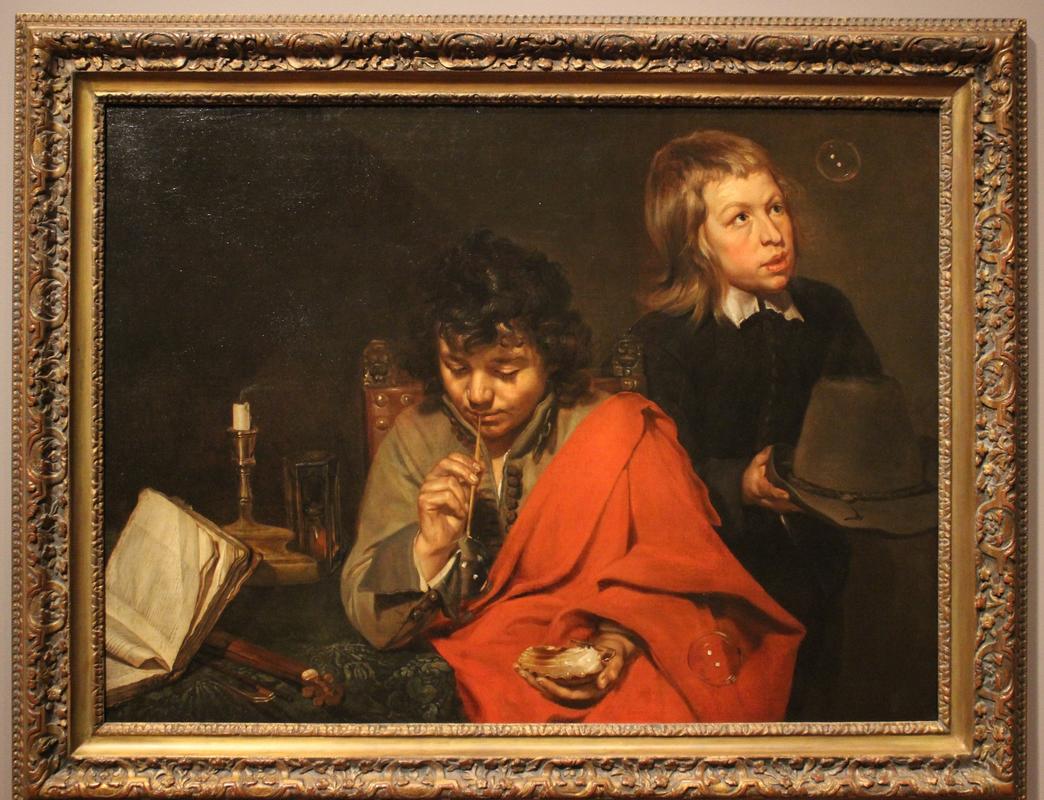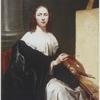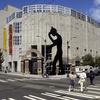More about Boys Blowing Bubbles

Contributor
If you want more clear cut instances of gender inequality in the art world, look no further than the case of Michaelina Wautier and Boys Blowing Bubbles.
The painting was originally attributed to Jacob van Oorst, a contemporary of Wautier’s and a leading Flemish Baroque painter of his time. It wasn’t the first time: many of her paintings were attributed to other artists, partly due to inaccuracy, and mostly because of sexist sentiments. It wasn’t until 2007 that Katlijne Van der Stighelen, an art historian from the University of Leuven, rightly revealed Wautier as the one responsible for this work. Proper that it would take a woman to bring Wautier’s name back into the limelight after years of obscurity.
Even more unjust is that Wautier actually enjoyed patronage and recognition in her time, especially as a portrait painter when most female painters of back then, rare as they were, usually stuck to still lifes of flower arrangements. She even did monumental works, usually reserved for the hands of men, and was extremely versatile as an artist.
This painting was not only a reminder of the transience of youth, but also of the impermanence of the prosperity that the Flemish enjoyed at the time. It’s rumored that the piece is also a double portrait, that is, a portrait of two people that emphasizes the two figures’ unity and similarity as opposed to highlighting their differences.
Floyd A. Naramore, the man responsible for donating Boys to the museum, was an architect. Born in 1879 in Warren, Illinois, he studied engineering at the University of Wisconsin before transitioning into architecture, graduating with a bachelor’s from MIT in 1907. His early career was with education districts: he was Architect and Superintendent of Properties for Portland’s school district, building sixteen schools for them from 1912 until 1919. Seattle then reached out to Naramore, who moved there and acted as the school system’s chief architect starting from 1919 until 1932, when the Great Depression made the construction of new schools less feasible. He is also known for constructing Bagley Hall at the University of Washington, the VA hospital, and the Seattle Federal Reserve Bank, amongst others. He died on October 29, 1970.
Sources
- “Floyd A. Naramore.” 1897. Washington State Department of Archaeology & Historic Preservation (DAHP). January 1, 1897. https://dahp.wa.gov/historic-preservation/research-and-technical-preser….
- Hower, Julia. 2018. “Object of the Week: Boys Blowing Bubbles.” SAM Blog. Seattle Art Museum. August 3, 2018. http://samblog.seattleartmuseum.org/2018/08/boys-blowing-bubbles/.
- McCouat, Philip. 2019. “Forgotten Women Artists #4: Michaelina Wautier: Entering the Limelight after 300 Years.” Journal of ART in SOCIETY. Journal of ART in SOCIETY. April 2019. http://www.artinsociety.com/forgotten-women-artists-4-michaelina-wautie…
- “Michaelina: Baroque’s Leading Lady.” 2018. MAS.be. Museum aan de Stroom. 2018. https://www.mas.be/sites/mas/files/MAS_Michaelina_gids_EN.pdf.
Featured Content
Here is what Wikipedia says about Two Boys Blowing Bubbles
Two Boys Blowing Bubbles is a painting by the seventeenth-century Walloon artist Michaelina Wautier. It has been suggested that the painting is a double portrait, given the specific facial expressions and costumes of the two boys depicted are so distinctive. Besides the two boys, the painting depicts a candle and a sandtimer. As with the bubble, both are symbolic of the passing of time, and were familiar motifs in seventeenth-century painting.
The painting was previously attributed to Jacob van Oost. However, research done in 2007 led to the re-attribution to Wautier.
The painting hangs in the Seattle Art Museum who purchased it in 1958. A second version by Wautier is in a private collection in Spain. A third painting, executed in the eighteenth century and copying just the boy on the right, is in the Collection des Musee d'Amiens, France.
Check out the full Wikipedia article about Two Boys Blowing Bubbles












